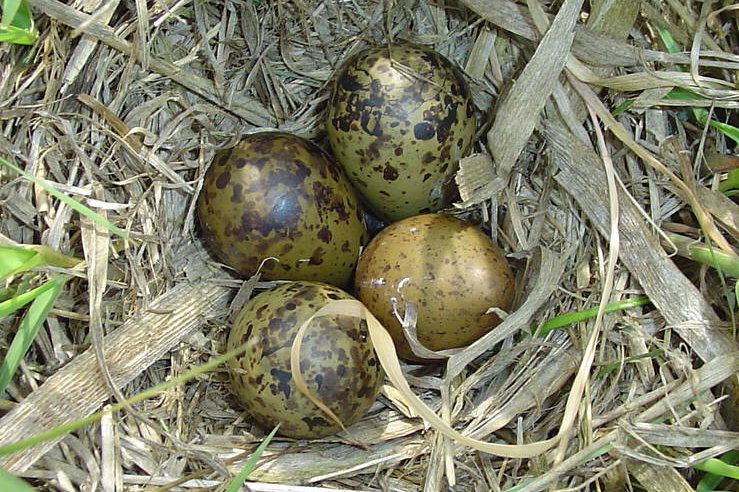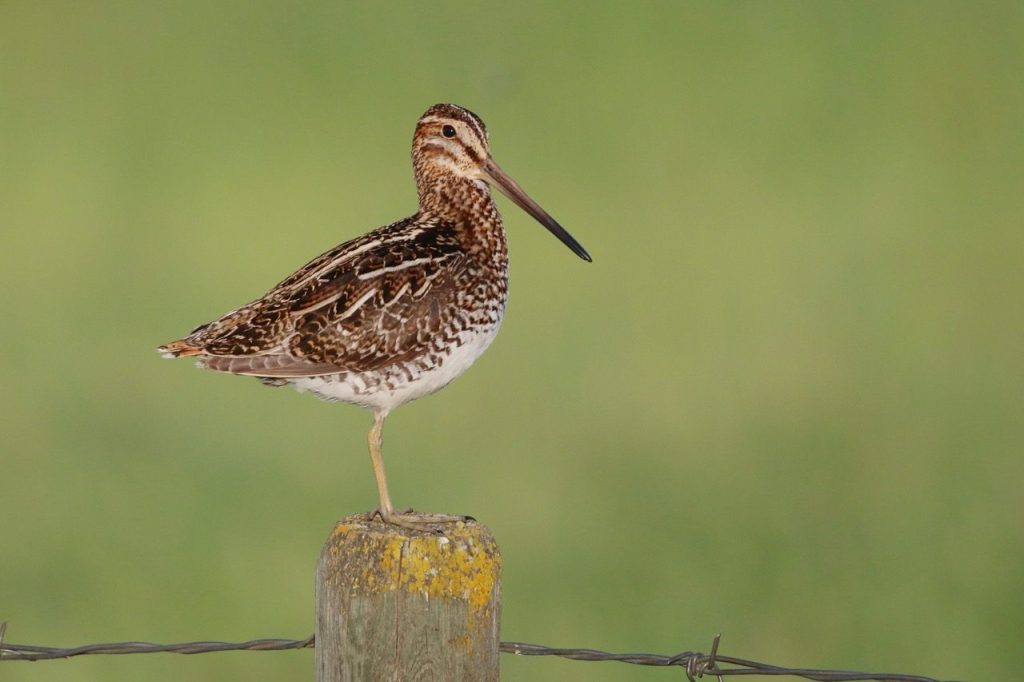A collection of Johnny Cash’s greatest hits and Kevin Colver’s Songbirds of Yellowstone and the High Rockies were the soundtracks of my field biology summers in Grand Teton National Park. These were the only two compact disks allowed in the work vehicle, so both were played on heavy rotation. Just as I can still remember the lyrics to every Johnny Cash song, my birding by ear game was upped substantially thanks to the Songbirds CD.
What made the Colver collection unique was that it included short introductions for each bird species. My favorite lede was that of the snipe. “A bewildering, wavering sound drifts from everywhere and yet from nowhere. Far above our heads a common snipe displays his prowess by cutting figure eights in an aerial display.”
A Mythical Bird That’s Real
From everywhere and yet from nowhere: This descriptor seemed to not only apply to the noise, but also, perhaps, to the bird itself.
Many summer campers have spent hours in search of the elusive snipe, an animal that is everywhere, yet nowhere. The snipe hunt prank has pushed this species to the edge of mythical in the minds of many.
If you take a poll of your friends, how many of them could confirm that snipe even exist? The bird is in fact quite real, although seeing one can be a bit of a challenge.
Despite a place on the Songbirds of Yellowstone CD, snipe are mid-sized shorebirds, not passerines. Thin legged and thin billed, snipe probe soft soils in search of invertebrate snacks. Snipe are widespread, yet their fairly narrow habitat preferences mean they can be quite localized.
The summer breeding range for Wilson’s snipe extends from the mountains of northern New Mexico to the tundra of Alaska and Canada. The birds are usually found in wet meadows, be it irrigated hayfields, montane meadows, boreal bogs, or wet muskeg. A number of snipe species occur throughout the world, and they share a preference for similar moist habitats.

Sounds of the Snipe
Snipe are notoriously difficult to flush into flight. Instead you’re likely to trudge past one without the faintest of hints to its whereabouts. They do have a couple of habits that makes them more conspicuous, especially in summer.
You’ll likely hear one before you spot it, but when you learn to pick out the noises snipe make, you can usually track them down.
Despite being well versed in the 78 tracks of birdcalls thanks to years of the Colver CD on repeat, more than once I’ve been faked out by snipe vocalizations. The “cluck, cluck, cluck” barks of a snipe sound like a distant turkey giving a putt or cut call.
After a couple of rounds of calling back to the “turkey”, I realize that the snipe have once again tricked me. When calling, snipe will often perch prominently on the tops of trees or fence posts, giving you a rare glimpse at the mottled brown birds.
Bold stripes running lengthwise along the top of the head help confirm the identification of snipe. The birds look especially portly thanks to a high ratio of pectoral muscles for a bird of its size.
The Winnowing
The sound most associated with snipe isn’t a song or a call. Instead, the winnowing sound referenced on the CD is a haunting sound made in flight.
Reminiscent of the “whoop, whoop, whoop” made by Curly of the Three Stooges, this noise comes from specialized tail feathers creating the fluttering buzz. Males will perform aerial acrobatics, also called winnowing, to defend a territory and to attract mates. The sounds you hear during these acrobatics are from the feathers.
Females will winnow during the early part of the breeding season. The hollow winnowing of the tail feathers seemingly echoes off wispy cumulous clouds. The faintness can make you second-guess that you’ve heard anything at all. It can be heard anytime during the day, but the frequency picks up at dusk and into the night.
Researchers have determined that peak winnowing happens when snipe are traveling 25 miles per hour. Curiously, the tail feathers are also what researchers use in snipe taxonomy.
Wilson’s snipe, the North American species, was separated out from the Eurasian common snipe species in 2002, in part due to the fact that they have different numbers of tail feathers. Wilson’s have 16 rectrices, while the other species has 14 tail feathers.
Most shorebirds barely scrape out a divot for nesting, but female snipe build a slightly more elaborate nest of weaved grasses. Nests are located near water and dense vegetation helps conceal the location. After the eggs hatch broods are sometimes split between males and females. Individually, both parents raise a few of the young birds for the season.

By late summer, Wilson’s snipe start moving south for fall migration. Those ripped pecs that give the snipe the plump body shape provide the strength for reaching great speeds in flight. This quickness, up to 60 miles per hour, coupled with a zigzag flight pattern, earned real snipe hunting a reputation in bird hunting circles. The term sniper is thought to have origins in snipe hunting, as successful hunters had to be great shots to bag any of these agile birds. Hunting pressure is relatively light for snipe. Harvest surveys indicate around 100,000 birds are taken annually in the United States and Canada. Habitat loss is a bigger threat, as there are fewer suitable places for snipe to survive.
Although a few individuals make appearances on Christmas Bird Counts in northern regions, most Wilson’s snipe overwinter from the southern United States through Venezuela. Rice and sugarcane fields can hold good numbers of the birds. Snipe can also be found in the riparian zone along many rivers and creeks.
I feel lucky every single time I find a snipe. Each encounter is fleeting. The ephemeral moments I share with these mysterious fliers, always takes me back to a time when Johnny Cash and Kevin Colver provided the soundtrack of my life. The Ghost Rider in the Sky and the ghost flier in the sky are forever linked in my mind.




Thank you for sharing the winnowing recording, it’s lovely! I heard a lot of them in late Spring in rural Montana.
Interesting photo: I always thought that fenceposts were reserved for Upland Sandpipers. I usually see snipes at water’s edge.
Thank you so much for this article. I finally found out what the ghostly evening sound is that seems to come from everywhere ( here in the Outer Hebrides).
The Common snipe was one of the first Idaho birds that I was introduced to by my firefighting buddy, Mindy. She grew up in the Salmon River Valley and I was a new transplant from Minnesota. Her name for the local snipe was “The Woo-woo birds,” so named for that special winnowing flight call they make after flying up high and then drop fast toward the ground while making a kind of haunted wooing sound. It took me awhile searching through my Peterson’s Western Bird book before I finally found the true name of the “Woo woo bird” of Salmon, Idaho.
I enjoyed that. I have a few owl calls on m y phone but not a Wilson ‘s Snipe yet. We’ll see.
I didn’t actually believe that there were real birds called snipes, being a victim and perpetrator of the famous “snipe hunts”. Then I went to University. During Ornithology class I clearly remember studying the behavior of those now famous birds! I also remember thinking , they’re really are snipes!!!!!!!!
Nice article!